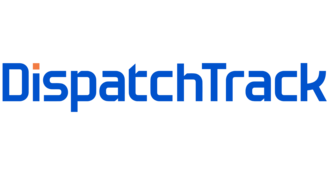
news
DispatchTrack Featured by Freightwaves on Last-Mile Delivery Fulfillment Optimization

The rise of e-commerce within the retail industry has simultaneously led to an increased focus on the last-mile part of delivery fulfillment as companies are quickly adapting to cater to evolving consumer needs. The “Amazon effect” has pushed consumers to the center of the supply chain, with retailers needing to obsess over delivery speed and honoring narrow delivery windows.
One of the vital parameters in last-mile delivery is the estimated time of arrival (ETA) calculation, critical in determining delivery experience for consumers. Businesses that work in the traditional way, in which routes are predetermined and rigid, find it hard to cope with the nature of e-commerce fulfillment, requiring them to be dynamic and agile with their delivery operations.
FreightWaves connected with executives from DispatchTrack, a California-based last-mile optimization company, to discuss the need for ETA visibility and how their technology can help bridge the gap.
One of the consequences of COVID-19 has been the funneling of retail sales from storefronts to online commerce, as people stayed indoors due to widespread quarantines necessitated by local governments. Satish Natarajan, the CEO of DispatchTrack, explained that there had been a visible increase in the density of stops done by last-mile delivery vans — pointing to a jump in overall e-commerce sales volumes.
“In delivery, there are two types of products — the high-velocity ones and the low-velocity ones. Vendors can optimize the number of travel miles ahead of time by making sure the high-velocity products are filled locally, while low-velocity products are palletized on semis,” said Natarajan.
But with deliveries expected the next day or in two days, it becomes crucial for companies to start moving products immediately after orders are placed. As this reduces the lead time companies get to determine delivery logistics, it is imperative for technology to play a role in hastening operations.
“Solutions like ours use artificial intelligence and machine learning to understand patterns that give companies their optimized routes in a matter of minutes or even seconds. This enables businesses to load their low-velocity products onto trucks and palletize them, before the trucks leave the regional distribution centers towards delivery,” said Natarajan.
DispatchTrack works with clients to determine their low- and high-velocity products and plots optimized routes for them to fulfill deliveries. Natarajan explained that DispatchTrack adjusts to client requirements and provides granular insights on product movement within specific localities.
“DispatchTrack is focused on back-end optimization while enhancing customer experience. In the COVID-19 world, online orders have increased and delivery companies look to deliver more without having to add more trucks,” said Shailu Satish, the COO of DispatchTrack. “This means further optimization, where we can utilize semis as mini-warehouses.”
DispatchTrack customers have now been practicing this, strategically packing traditional semis and parking them in convenient locations across urban markets, while using smaller trucks to expedite last-mile deliveries.
Natarajan expects the upcoming holiday season to start sooner as more people may order online this year compared to last year. “Though we might not see the demand climb very high, we do expect it to go up at least 20%, like on Labor Day. It becomes even more important to route and track freight accurately, and at DispatchTrack, we can bring a whole lot of intelligence to work at such scale,” he said.